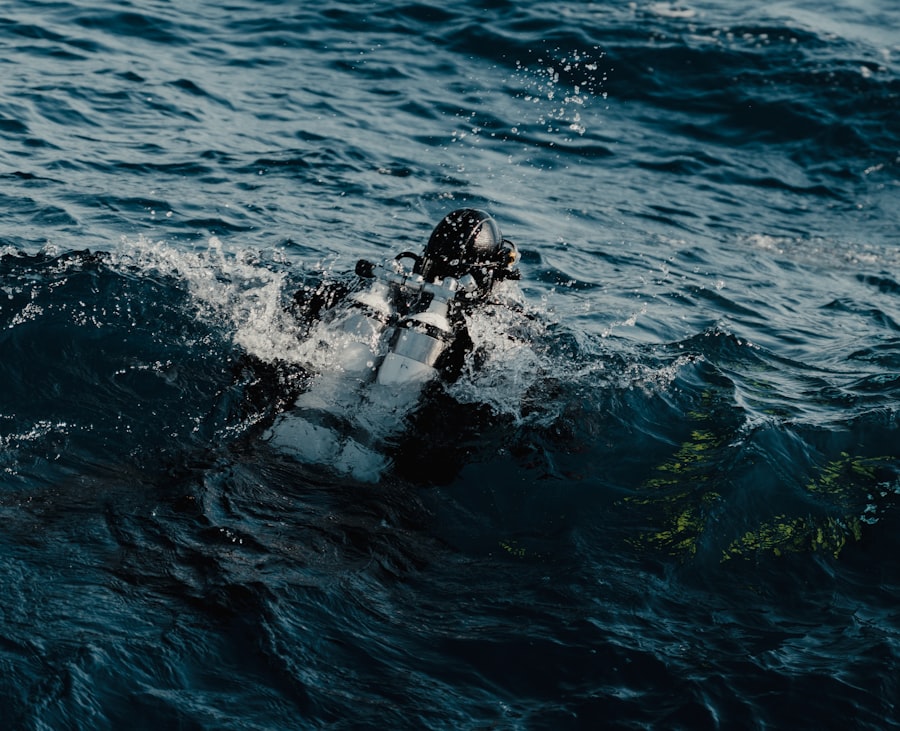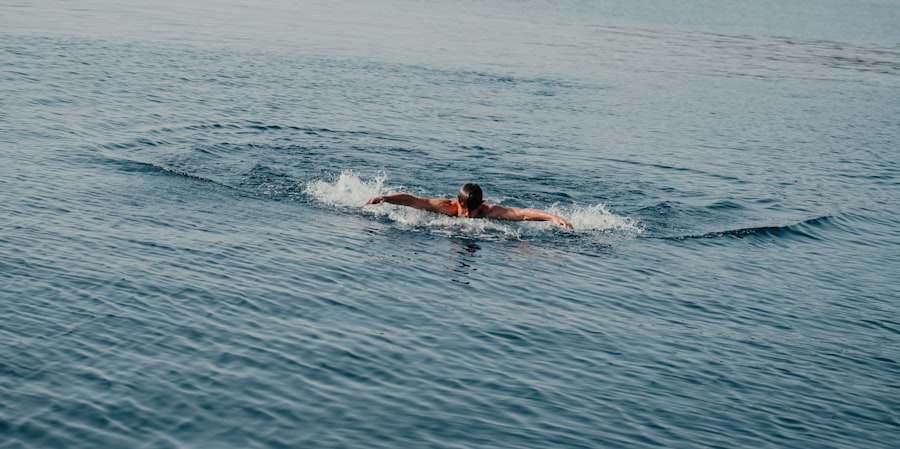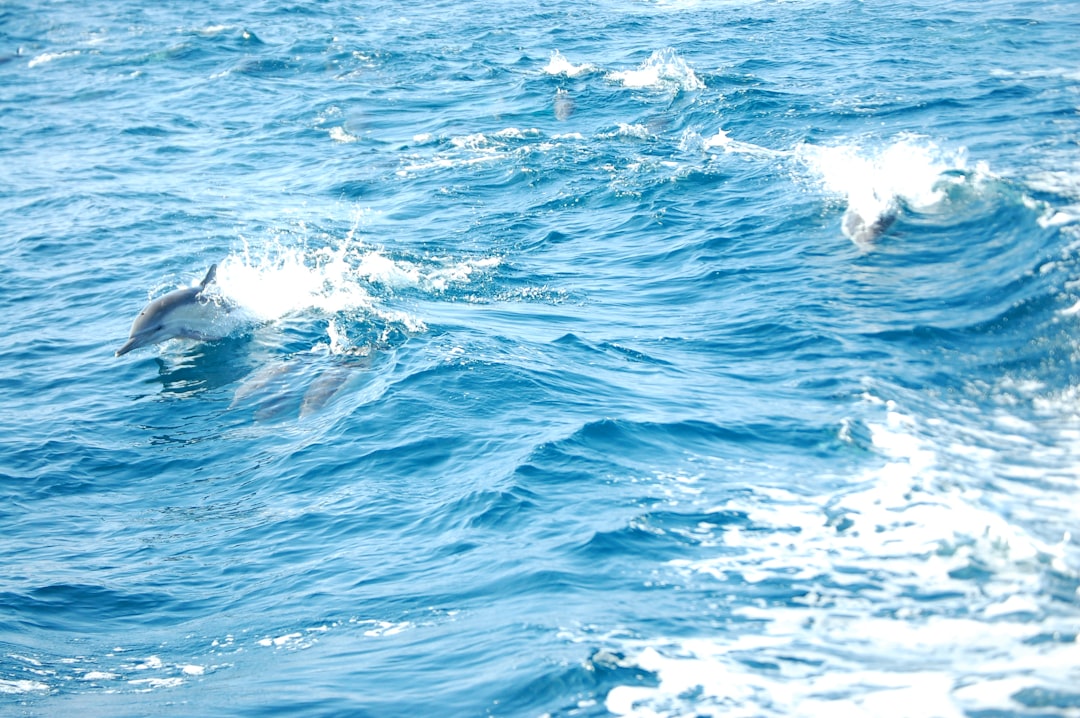Drake’s Passage, a body of water situated between the southern tip of South America and Antarctica, is renowned for its tumultuous seas and unpredictable weather. Named after the English explorer Sir Francis Drake, who navigated these waters in the late 16th century, the passage serves as a critical maritime route for vessels traveling to and from the Antarctic region. Stretching approximately 800 kilometers (500 miles) in width, it is often regarded as one of the most challenging and dangerous stretches of ocean in the world.
The passage is not only a geographical marvel but also a site of fascination for adventurers and researchers alike, drawing attention for its extreme conditions and unique marine ecosystem. The allure of Drake’s Passage extends beyond its historical significance; it has become a symbol of human endurance and exploration. Many adventurers dream of conquering its formidable waters, whether through sailing, kayaking, or even swimming.
However, the prospect of swimming in such a perilous environment raises questions about the feasibility and safety of such an endeavor. As individuals contemplate the possibility of traversing this notorious passage by swimming, they must grapple with the myriad challenges that lie ahead.
Key Takeaways
- Drake’s Passage is a treacherous stretch of water between South America and Antarctica, known for its extreme weather and challenging conditions.
- Swimming in Drake’s Passage presents numerous challenges, including freezing temperatures, strong currents, and unpredictable weather.
- The physical demands of swimming in Drake’s Passage are immense, requiring exceptional endurance, strength, and mental fortitude.
- The weather and sea conditions in Drake’s Passage are notoriously harsh, with frequent storms, high winds, and rough seas.
- Drake’s Passage is home to a diverse range of wildlife and marine life, including whales, seals, and various seabird species.
The Challenges of Swimming in Drake’s Passage
Swimming in Drake’s Passage presents a multitude of challenges that can deter even the most seasoned swimmers. The first and foremost challenge is the sheer distance involved. The passage spans a vast expanse of ocean, with swimmers needing to cover significant distances to reach their destination.
This requires not only exceptional swimming skills but also an unwavering determination to endure the physical and mental strain that accompanies such an undertaking. Moreover, the unpredictable nature of the waters poses a significant threat to swimmers. The currents in Drake’s Passage are notoriously strong, often reaching speeds of up to 10 knots.
These currents can create treacherous conditions that can easily overwhelm even the most experienced swimmers. Additionally, the presence of large waves and swells can make navigation exceedingly difficult, further complicating any attempt to swim across this formidable stretch of ocean. The combination of distance, strong currents, and unpredictable waves creates an environment where only the most prepared and resilient individuals might dare to venture.
The Physical Demands of Swimming in Drake’s Passage

The physical demands of swimming in Drake’s Passage cannot be overstated.
Training for such an endeavor typically involves rigorous conditioning, including long-distance swimming sessions in various water conditions to simulate the challenges faced in the passage.
In addition to endurance training, swimmers must also focus on building their mental fortitude. The psychological aspect of swimming in such a daunting environment is just as crucial as physical preparation. Swimmers must be able to maintain focus and composure amidst the chaos of turbulent waters and harsh weather conditions.
This mental resilience can be developed through techniques such as visualization, meditation, and exposure to cold water training, all aimed at preparing the swimmer for the unique challenges that lie ahead.
The Weather and Sea Conditions in Drake’s Passage
| Date | Temperature (Celsius) | Wind Speed (km/h) | Wave Height (meters) |
|---|---|---|---|
| January 1, 2022 | 5 | 40 | 3 |
| January 2, 2022 | 4 | 35 | 2.5 |
| January 3, 2022 | 3 | 30 | 2 |
The weather and sea conditions in Drake’s Passage are notoriously volatile, contributing to its reputation as one of the most treacherous maritime routes in the world. The passage is characterized by strong winds, often exceeding 40 knots, which can whip up waves that reach heights of over 30 feet. These extreme conditions can change rapidly, making it essential for anyone attempting to swim in these waters to be acutely aware of weather patterns and forecasts.
The cold temperatures of the water present another significant challenge for swimmers. The average sea temperature in Drake’s Passage hovers around 2 degrees Celsius (36 degrees Fahrenheit), which poses a serious risk of hypothermia for those unprepared for such frigid conditions. Swimmers must equip themselves with specialized wetsuits designed to provide insulation and buoyancy while allowing for maximum mobility.
However, even with proper gear, prolonged exposure to such cold water can lead to severe physical consequences, making it imperative for swimmers to have a well-thought-out plan for their swim.
Wildlife and Marine Life in Drake’s Passage
Drake’s Passage is not only known for its challenging conditions but also for its rich biodiversity. The waters teem with marine life, including various species of fish, seals, and whales that thrive in this nutrient-rich environment. Swimmers may encounter majestic creatures such as humpback whales, orcas, and even the elusive blue whale during their journey through these waters.
While these encounters can be awe-inspiring, they also come with inherent risks. The presence of wildlife adds another layer of complexity to swimming in Drake’s Passage. While many marine animals are harmless, some species pose potential threats to swimmers.
For instance, large sharks have been known to inhabit these waters, and their presence can create an atmosphere of unease for those attempting to swim across the passage. Additionally, swimmers must remain vigilant about their surroundings to avoid inadvertently disturbing marine life or becoming entangled in fishing gear or debris that may be present in the water.
Safety Precautions for Swimming in Drake’s Passage

Given the numerous challenges associated with swimming in Drake’s Passage, safety precautions are paramount for anyone considering this extreme endeavor. First and foremost, swimmers should never attempt this journey alone; having a support team is essential for monitoring conditions and providing assistance if needed. A support boat equipped with safety gear, communication devices, and medical supplies can be invaluable in case of emergencies.
Swimmers should also undergo thorough training and preparation before attempting to swim in these waters. This includes not only physical conditioning but also familiarization with navigation techniques and emergency protocols. Understanding how to read ocean currents and weather patterns can significantly enhance a swimmer’s chances of success while minimizing risks.
Additionally, swimmers should always inform local authorities or maritime organizations about their plans to ensure that help is available if needed.
Alternative Methods of Navigating Drake’s Passage
For those who seek adventure but are deterred by the challenges of swimming in Drake’s Passage, alternative methods of navigation exist that allow individuals to experience this remarkable body of water without facing its dangers head-on. One popular option is kayaking, which offers a more controlled environment while still allowing adventurers to explore the stunning landscapes and wildlife that characterize the passage. Sailing is another alternative that provides a unique perspective on Drake’s Passage without subjecting individuals to its treacherous waters directly.
Many sailing expeditions offer guided tours through the passage, allowing participants to witness its beauty while remaining safely aboard a vessel equipped to handle the challenging conditions. These alternatives not only provide a safer means of exploration but also allow individuals to appreciate the natural wonders of Drake’s Passage without risking their lives.
Historical Attempts at Swimming in Drake’s Passage
Throughout history, there have been several notable attempts at swimming across Drake’s Passage, each marked by its own set of challenges and triumphs. One of the most famous attempts occurred in 2010 when British adventurer Lewis Pugh undertook a swim across a portion of the passage as part of his campaign to raise awareness about climate change and its impact on polar regions. Pugh’s swim was not only a remarkable feat of endurance but also served as a powerful message about environmental conservation.
Other attempts have been less successful, often resulting in swimmers being forced to abandon their efforts due to adverse weather conditions or physical exhaustion. These historical attempts highlight both the allure and danger associated with swimming in Drake’s Passage, serving as cautionary tales for those who may consider following in their footsteps.
The Future of Swimming in Drake’s Passage
As interest in extreme sports continues to grow, so too does curiosity about swimming in Drake’s Passage. While current conditions make it an incredibly challenging endeavor, advancements in technology and training methods may pave the way for future attempts at conquering this formidable stretch of water. Innovations in wetsuit design could provide swimmers with better insulation and buoyancy, while improved navigation tools may enhance safety during such endeavors.
Moreover, as awareness about climate change increases, more individuals may seek to undertake swims across Drake’s Passage as a means of raising awareness about environmental issues affecting polar regions. This could lead to a new wave of adventurers willing to take on the challenges posed by this iconic body of water while simultaneously advocating for conservation efforts.
Expert Opinions on Swimming in Drake’s Passage
Experts from various fields have weighed in on the feasibility and safety of swimming in Drake’s Passage. Marine biologists emphasize the importance of understanding local wildlife and ecosystems before attempting such an endeavor, highlighting both the beauty and potential dangers present in these waters. They caution that while encounters with marine life can be awe-inspiring, they also require careful consideration and respect for natural habitats.
Swim coaches and trainers stress the need for rigorous preparation and training before attempting any swim across Drake’s Passage. They advocate for comprehensive conditioning programs that focus on endurance, strength training, and mental resilience. Additionally, they emphasize the importance of having a solid support system in place to ensure safety during such extreme endeavors.
Is Swimming Possible in Drake’s Passage?
In conclusion, while swimming in Drake’s Passage presents an array of formidable challenges—from unpredictable weather conditions to strong currents—there remains an undeniable allure for those drawn to adventure and exploration. The physical demands are immense, requiring exceptional endurance and mental fortitude from anyone daring enough to attempt this feat. Despite historical attempts highlighting both triumphs and failures, it is clear that swimming across this notorious passage is not for the faint-hearted.
As interest continues to grow around extreme sports and environmental advocacy, future attempts at swimming in Drake’s Passage may become more common—though they will undoubtedly require careful planning and preparation. Ultimately, whether or not swimming is possible in this treacherous body of water depends on individual determination, preparation, and respect for nature’s unpredictable forces.
Swimming across Drake’s Passage is a daunting challenge due to its notoriously rough seas and frigid temperatures. This treacherous stretch of water between the southern tip of South America and Antarctica is known for its unpredictable weather and strong currents, making it a formidable task even for the most experienced swimmers. For those interested in learning more about the geographical and environmental aspects of such extreme endeavors, you might find this related article insightful. It delves into the challenges and considerations of navigating some of the world’s most challenging waters.
WATCH NOW! Drake Passage: Earth’s Deadliest Waters Revealed
FAQs
What is Drake’s Passage?
Drake’s Passage is a body of water located between the southern tip of South America and the northern tip of the Antarctic Peninsula. It is known for its notoriously rough and unpredictable seas, strong winds, and extreme weather conditions.
Is it possible to swim across Drake’s Passage?
Swimming across Drake’s Passage is not recommended and is considered extremely dangerous. The cold water temperatures, strong currents, and unpredictable weather make it a perilous undertaking.
Are there any successful attempts to swim across Drake’s Passage?
There are no documented successful attempts of swimming across Drake’s Passage. The extreme conditions make it nearly impossible for a swimmer to safely navigate the passage.
What are the dangers of swimming in Drake’s Passage?
The dangers of swimming in Drake’s Passage include frigid water temperatures, strong currents, unpredictable weather, icebergs, and the presence of marine wildlife such as seals and whales. These factors make it an extremely hazardous environment for swimmers.
